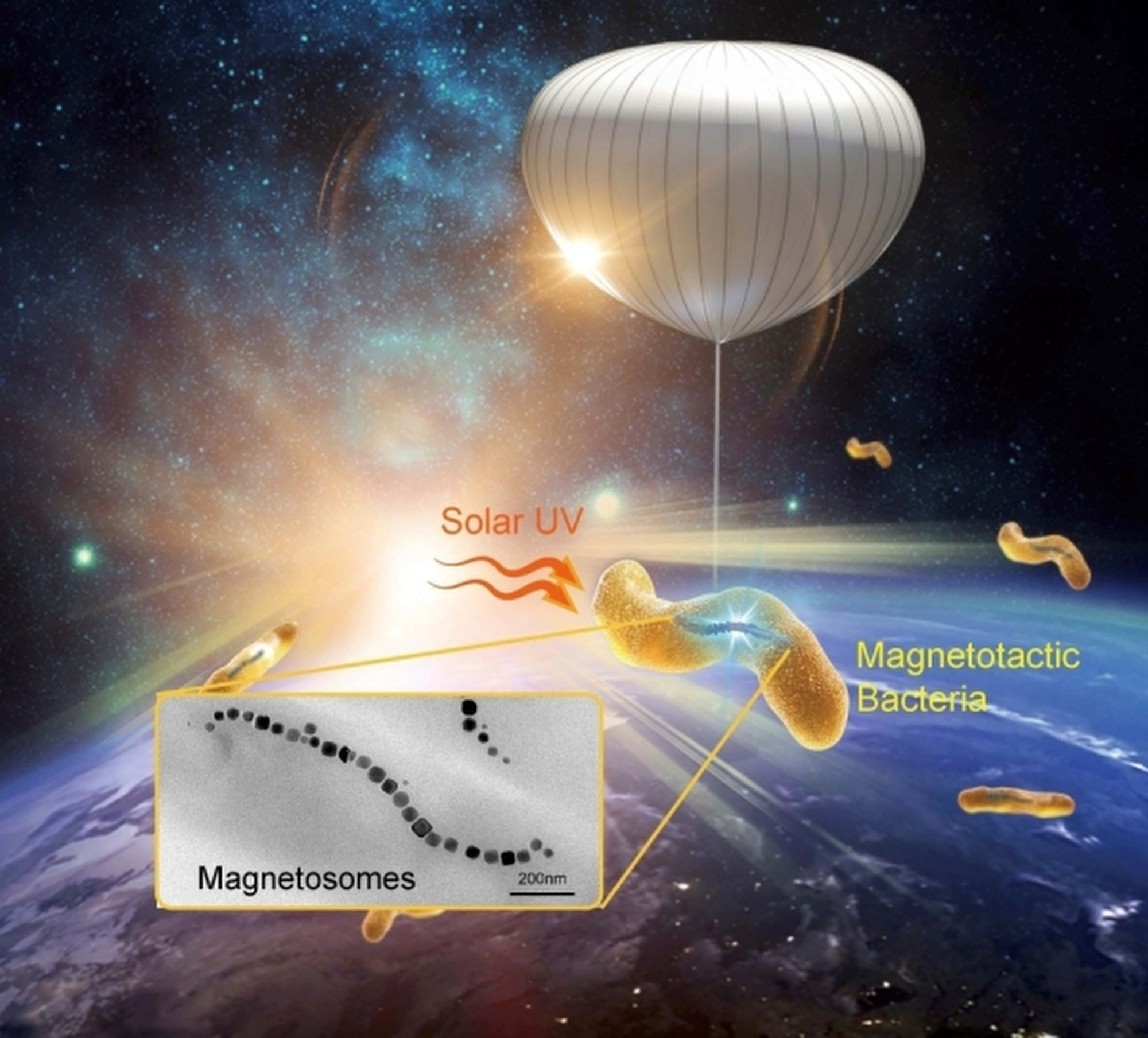
‘Magnetic shields’ could help bacteria survive on Mars, Chinese scientists say
- Researchers send box full of bacteria to near space, but only those containing magnetic particles can endure harsh UV radiation
- Future experiments on whether the microorganisms can live near space stations are ‘highly anticipated’, according to study
They found that some strains of magnetotactic bacteria (MTB), which thrive in environments that lack oxygen, survived at 23km (14 miles) above sea level after seven hours of exposure, while all other types of bacteria died.
MTB are microorganisms commonly found in fresh water and marine habitats. They synthesise magnetic iron nanominerals, which act as a compass to help the bacteria navigate using the Earth’s geomagnetic field.
When exposed to near space, the magnetic particles in the bacteria might have helped them survive UV radiation, according to the researchers.
“Ultraviolet (UV) radiation has been shown to be one of the main causes of biological mortality in near space.
“Considering that Earth’s lower near space is an exemplary analogue to the present-day Martian surface and the atmosphere of Venus, the survivability of MTB in this region suggests that MTB can be valuable candidates for astrobiology research.
Fungi on Mars? Researchers claim signs of life on red planet
The Martian surface is exposed to levels of radiation 17 times higher than on Earth. The red planet has no global magnetic field to deflect energetic particles and has a much thinner atmosphere than Earth.
In 2020, scientists launched a box carrying bacteria samples into lower near space from the northwestern Chinese province of Qinghai using a high-altitude helium balloon.
The samples remained shielded until the box’s lid was lifted to start the seven hours of exposure. After the flight, the scientists recovered the samples and estimated the number of surviving bacteria in each sample.
They found that for the group that was launched to near space but shielded by an opaque lid, the estimated survival rate “did not change significantly” compared to the group that remained in the lab, while survival of the bacteria exposed to near space decreased significantly.

Bacteria that did not form magnetosomes – membranous structures that contain magnetic particles – were less likely to survive, suggesting that these structures “may play an important role in protecting MTB from UV irradiation”, according to the paper.
Bacteria “with more magnetosomes may have a better chance to survive after near space flight exposure”, the scientists said.
The researchers said their results were noteworthy because the bacteria did not typically thrive in extreme environments and were not expected to survive in near space, away from their normal aquatic environment.
However, Alice Hughes, an associate professor at the School of Biological Sciences at the University of Hong Kong, said the ability to withstand high UV was “not that remarkable”, and similar microorganisms might be found near the ozone hole.
“The fact they can survive in space for a short time does not really provide a huge step forwards in the ability of humans to colonise other planets,” she said. “Understanding the mechanisms is useful, but there is still a long way to go.”


